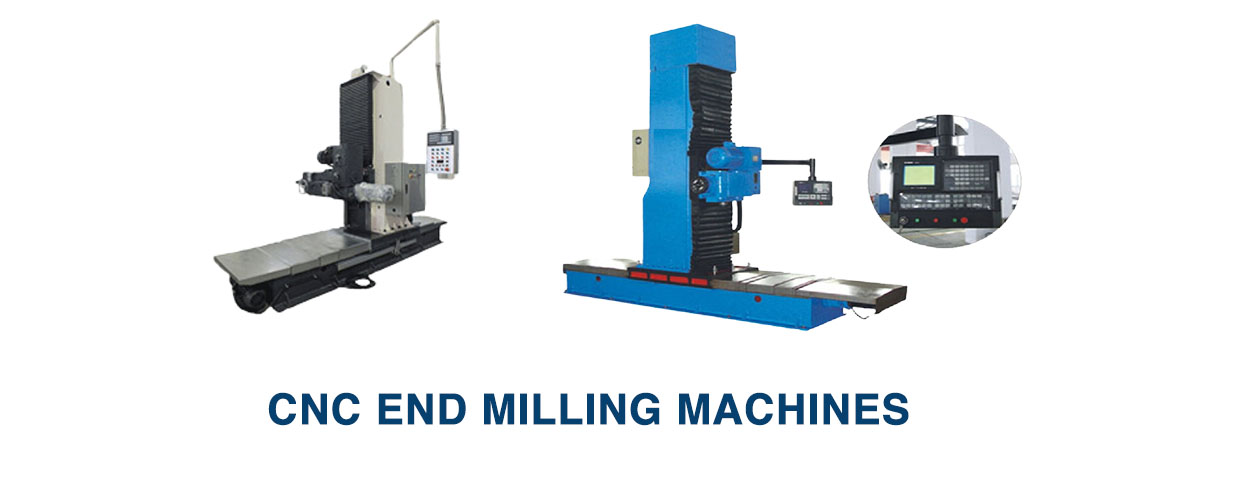Understanding the Versatility and Efficiency of End Milling Machine: A Comprehensive Guide by Karam Machine Tools
Overview
Machining equipment is an essential tool in precise engineering and production. End milling machines are handy because of their precision and versatility among the different types of equipment employed. The functioning of end milling machines, their benefits, and a comparison with other crucial devices like horizontal boring machines and vertical turning lathe machines are all covered in this blog post by Karam Machine Tools. This tutorial will bring you useful insights, whether your goal is to improve your production capacity or just gain a better understanding of this equipment.

An end milling machine: what is it?
Meaning and Objective
A flexible instrument for creating complex shapes, curves, slots, and flat surfaces in metal, plastic, and other materials is an end milling machine. The device offers excellent precision and a flawless finish by removing material from a workpiece using revolving cutters. End milling machines are extremely useful in modern production because of their versatility in performing milling operations including edge profiling, slot cutting, and face milling. This is their main advantage.
Important Elements
Spindle: The rotating component that holds the milling cutter and drives its rotation.
Table: The surface that is used to move and secure the workpiece.
Column and Base: Give the machine stability and support.
Knee and Cross Slide: Provide accurate workpiece position adjustments.
Benefits of End Milling Equipment
Flexibility
Machines for end milling are known for their versatility. They are capable of carrying out a variety of tasks, such as:
Flat surface milling is the best method for producing level, smooth surfaces.
Slot cutting is useful for making different-sized slots and grooves.
Contouring enables the creation of complex shapes and profiles.
Accuracy and Precision
At Karam Machine Tools, End mills are made with extreme precision in mind. Precise control over the depth and width of cuts is necessary to achieve the precise tolerances needed to produce high-quality components. Because of its accuracy, end milling machines are appropriate for sectors like aerospace and automotive that have high standards.
Effectiveness
These devices have excellent production speeds and rates of material removal. Because they can complete several tasks with a single configuration, you need fewer pieces of equipment and setups, which boosts production overall.
Comparing Horizontal Boring and End Milling Machines
Overview of Horizontal Boring Machines
Large workpieces are bored and drilled using horizontal boring machines. Their horizontal spindle orientation makes them perfect for heavy-duty and expansive applications. Large elements like industrial equipment and engine blocks are especially well-suited for these machines.
Variations in Utilization
Functionality: People utilize end milling machines for more complex operations like contouring and slot cutting, while they primarily use horizontal boring machines for drilling and boring large holes.
Size & Scale: While end milling machines perform a greater range of smaller, more precise operations, horizontal boring machines handle larger, heavier components.
Complexity of Operations: Compared to horizontal boring machines, end milling machine in India provide more flexibility for complex geometries.
Comparing Vertical Turning Lathe Machines and End Milling Machines
Overview of Vertical Turning Lathe Machines
For turning activities where the workpiece is turned on a vertical axis, vertical turning lathes are generally utilized. They are not only capable of handling big, heavy components but are also frequently used to produce cylindrical pieces. Furthermore, these devices work well in situations where precise turning movements are necessary. As a result, they are highly efficient in various industrial applications.
Variations in Utilization
Operation Type: People use end milling machines for milling, which includes shaping and cutting operations, while vertical turning lathes perform dedicated turning activities.
Workpiece Orientation: Unlike end milling machines, which rotate the workpiece horizontally, vertical turning lathes rotate it vertically.
Machine Size and Capacity: Compared to end milling machines, vertical turning lathes are usually larger and made to accommodate heavier workpieces.
Selecting the Appropriate Device for Your Purposes
Take into account the following elements while choosing the right machine for your manufacturing requirements:
Sort of Operation: Assess if turning, boring, or milling operations are required.
Workpiece Dimensions and intricacy: Based on the size and complexity of the components you are working with, select a machine.
Requirements for Precision: Verify that the machine satisfies the criteria for accuracy and precision needed for your applications.
In summary
Modern production relies heavily on end milling machines because of their efficiency, accuracy, and variety. You may choose the equipment that best meets your needs by being aware of their capabilities and how they stack up against vertical turning lathe machines and horizontal boring machines. At Karam Machine Tools, we carefully design our selection of top-notch end-milling machines and other essential machining tools to meet the various demands of the modern manufacturing sector. Moreover, if you would like more details about our offerings, you can either contact us directly or visit our website for further information. In addition, we are always ready to assist you with your needs.


